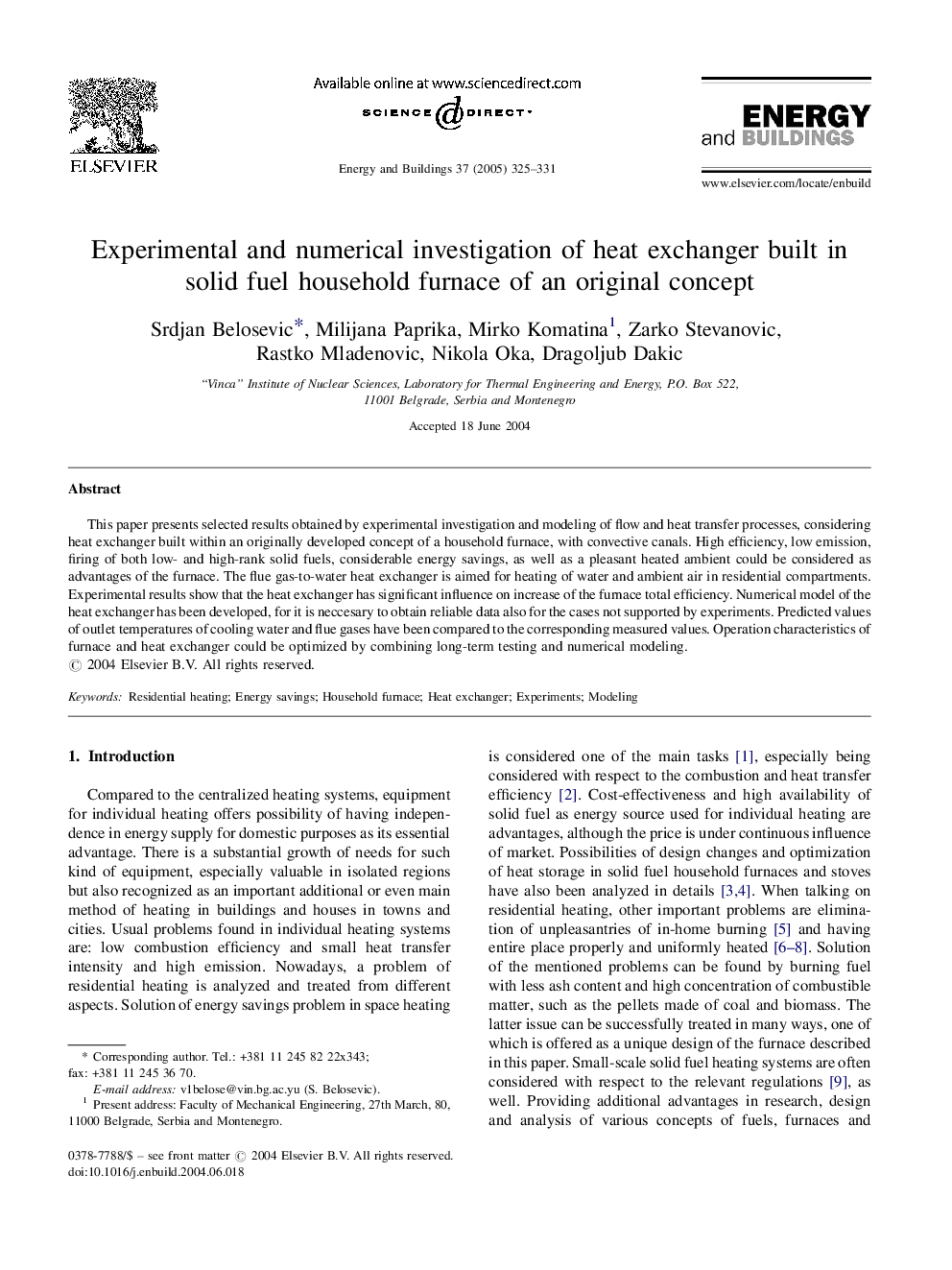| Article ID | Journal | Published Year | Pages | File Type |
|---|---|---|---|---|
| 10286139 | Energy and Buildings | 2005 | 7 Pages |
Abstract
This paper presents selected results obtained by experimental investigation and modeling of flow and heat transfer processes, considering heat exchanger built within an originally developed concept of a household furnace, with convective canals. High efficiency, low emission, firing of both low- and high-rank solid fuels, considerable energy savings, as well as a pleasant heated ambient could be considered as advantages of the furnace. The flue gas-to-water heat exchanger is aimed for heating of water and ambient air in residential compartments. Experimental results show that the heat exchanger has significant influence on increase of the furnace total efficiency. Numerical model of the heat exchanger has been developed, for it is neccesary to obtain reliable data also for the cases not supported by experiments. Predicted values of outlet temperatures of cooling water and flue gases have been compared to the corresponding measured values. Operation characteristics of furnace and heat exchanger could be optimized by combining long-term testing and numerical modeling.
Related Topics
Physical Sciences and Engineering
Energy
Renewable Energy, Sustainability and the Environment
Authors
Srdjan Belosevic, Milijana Paprika, Mirko Komatina, Zarko Stevanovic, Rastko Mladenovic, Nikola Oka, Dragoljub Dakic,
